Use of a Validated Risk Perception Questionnaire for the Inclusion of People with Hearing Impairments in a Productive Environment
Abstract
1. Introduction
2. Materials and Methods
2.1. Data Collection Procedure
- -
- Filtering procedures:
2.2. Development of Risk Perception Questionnaire
- (1)
- Literature review: Searches were carried out in periodicals, as previously mentioned, and no instrument was found that could provide a basis for this proposed study. There are some scientific studies regarding the development of technologies in order to facilitate the inclusion of hearing-impaired people in their daily lives and not in an industrial environment.
- (2)
- Expert Panels: For this stage, a committee was selected that was composed of specialists from different areas of study that were qualified to judge the validity of the instrument. The group included two ergonomists, two occupational health professionals, two occupational safety technicians, two speech therapists and one logistics engineer.
- (3)
- Test with a group of hearing-impaired individuals from other sectors: One of the most common methods for assessing the reliability of a research instrument is the test/retest, which involves applying the same questionnaire to the same group of participants at two different times [21]. Five hearing-impaired workers who also work in a production environment were selected to verify the clarity and relevance of each question. The simultaneous sign language translation platform (ICOM) was used to improve the clarity and interpretation of the questions in the questionnaire to be validated.
- (4)
- Cronbach’s alpha coefficient
2.3. Application of the Risk Perception Questionnaire
3. Results
- Block 3—Communication
- Block 4—Training
- Block 5—Interaction with machine operators
- Block 6—Safety items
3.1. Block 3—Communication
3.2. Block 4—Training
3.3. Block 5—Interaction with Machine Operators
3.4. Block 6—Safety Items
4. Discussion
5. Conclusions
Author Contributions
Funding
Institutional Review Board Statement
Informed Consent Statement
Data Availability Statement
Acknowledgments
Conflicts of Interest
Abbreviations
| Libras | Brazilian Sign Language |
| ICOM | The main simultaneous translation platform for Libras on the market that allows companies to serve deaf customers in their own language, Brazilian Sign Language. |
References
- Smith, L.; Brown, T.; White, E. Integrating Deaf Employees into Logistics Teams: A Study on Best Practices. Logist. Res. 2022. [Google Scholar]
- Johnson, M. Safety and Communication: The Role of Assistive Technologies in Logistics. Saf. Sci. 2023. [Google Scholar]
- Oliveira, R. Diversity and innovation in the logistics sector: The role of people with hearing impairments. Braz. J. Adm. 2021, 15, 78–89. [Google Scholar]
- Gorce, P. Theoretical and Applied Ergonomics: A New Open Access Journal. Theor. Appl. Ergon. 2025, 1, 1. [Google Scholar] [CrossRef]
- World Health Organization. Ergonomics: A Tool for Preventing Work Injuries; WHO: Geneva, Switzerland, 2001. [Google Scholar]
- Pheasant, S.; Haslegrave, C. Bodyspace: Anthropometry, Ergonomics and the Design of Work; CRC: Boca Raton, FL, USA, 2006. [Google Scholar]
- Booth, A. The Impact of Communication Barriers on Workplace Efficiency in Logistics. J. Logist. Manag. 2021. [Google Scholar]
- Grant, D.B. Logistics and Supply Chain Management, 1st ed.; Saraiva: São Paulo, Brazil, 2013. [Google Scholar]
- Reis, R.; Machado, M.; Gati, H. Human and Social Management. RAM Rev. Adm. Mackenzie 2017, 18, 178–202. [Google Scholar] [CrossRef]
- National Institute for Occupational Safety and Health (NIOSH). Training and Education. 14 August 2015. Available online: www.cdc.gov/niosh/ (accessed on 14 August 2021).
- Mikhael, A.; Lee, J.; Patel, R. Communicating Effectively in Diverse Work Environments: Strategies for Inclusion. J. Occup. Health Psychol. 2020, 25, 345–359. [Google Scholar]
- Anderson, T.; Smith, L.; Johnson, R. Innovative Technologies for Enhancing Workplace Inclusion. J. Logist. Supply Chain Manag. 2023, 15, 45–60. [Google Scholar]
- Pagani, R.N.; Kovaleski, J.L.; Resende, L.M. Methodi Ordinatio: A proposed methodology to select and rank relevant scientific papers encompassing the impact factor, number of citations, and year of publication. Scientometrics 2015, 105, 2109–2135. [Google Scholar] [CrossRef]
- Klein, H.; Sutherland, J. Breaking Down Barriers: Awareness Training for Inclusion in Logistics. Logist. Today 2022, 10, 78–89. [Google Scholar]
- Soares, E.B. Inclusion of professionals with disabilities in the workplace: Challenges for the Human Resources Management. Gest. Prod. 2019, 26, e2871. [Google Scholar] [CrossRef]
- Hair, J.F.; Black, W.C.; Babin, B.J.; Anderson, R.E. Multivariate Data Analysis, 8th ed.; Cengage Learning: Boston, MA, USA, 2018. [Google Scholar]
- Coluci, M.Z.O.; Alexandre, N.M.C.; Milani, D. Construction of measuring instruments in the health area. Ciência Saúde Coletiva 2015, 20, 925–936. [Google Scholar] [CrossRef] [PubMed]
- Salmond, S.S. Evaluating the reliability and validity of measurement instruments. Orthop. Nurs. 2008, 27, 28–30. [Google Scholar] [CrossRef] [PubMed]
- Martins, G.A. On reliability and validity. Braz. J. Manag. Bus. 2006, 8, 1–12. [Google Scholar]
- Creswell, J.W. Research Design: Qualitative, Quantitative, and Mixed Methods Approaches; Sage Publications: Thousand Oaks, CA, USA, 2017. [Google Scholar]
- Polit, D.F. Getting serious about test–retest reliability: A critique of retest research and some recommendations. Qual. Life Res. 2014, 23, 1713–1720. [Google Scholar] [CrossRef] [PubMed]
- Kennedy, I. Sample size determination in test-retest and Cronbach alpha reliability estimates. Br. J. Contemp. Educ. 2022, 2, 17–29. [Google Scholar] [CrossRef]
- Taber, K.S. The use of Cronbach’s alpha when developing and reporting research instruments in science education. Res. Sci. Educ. 2018, 48, 1273–1296. [Google Scholar] [CrossRef]
- Wang, M.; Kumar, M.; Tsolakis, N. Exploring the role of job satisfaction in enhancing logistics performance in the era of Industry 5.0. Int. J. Logist. Res. Appl. 2025, April, 1–25. [Google Scholar] [CrossRef]
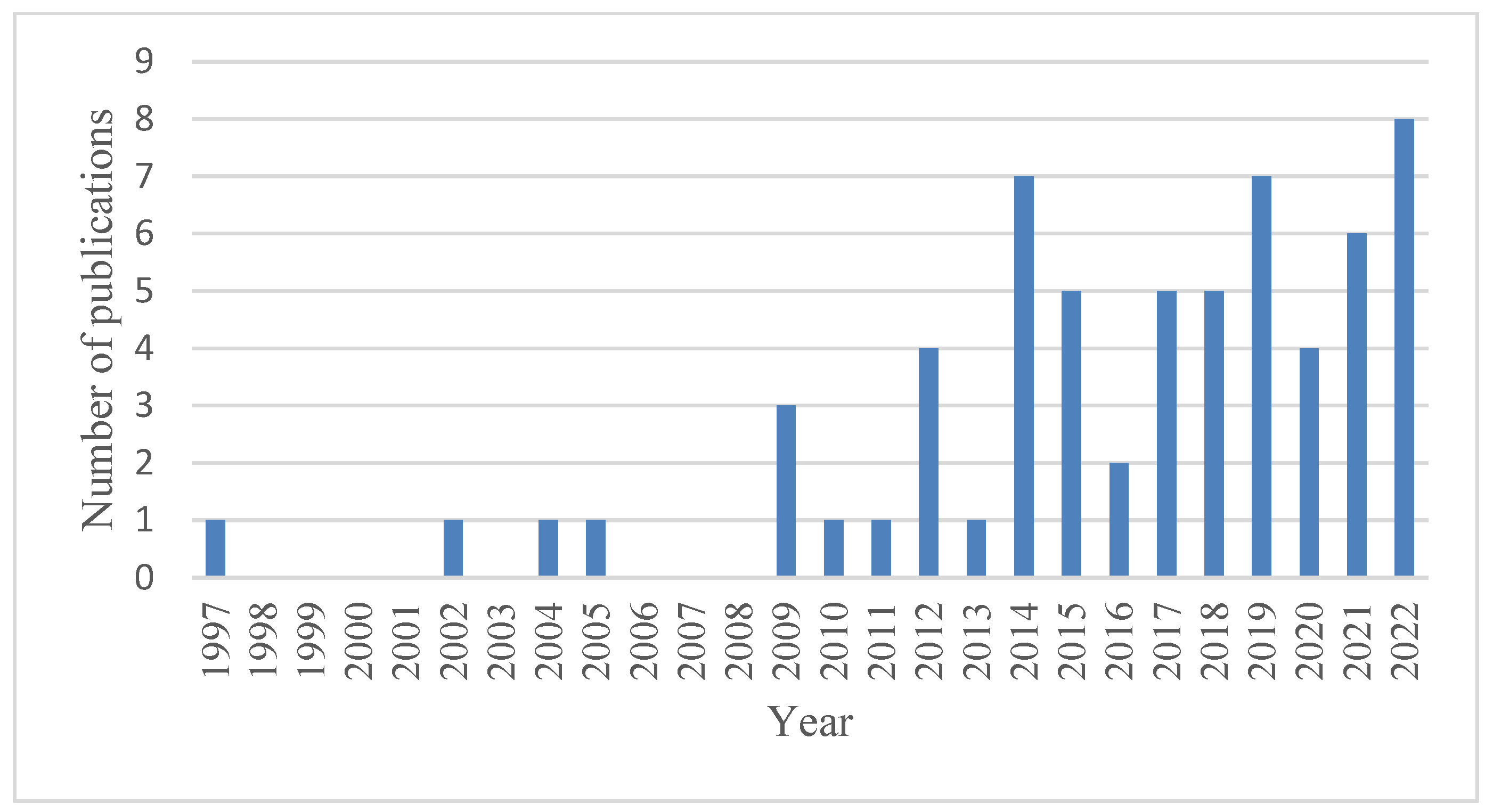
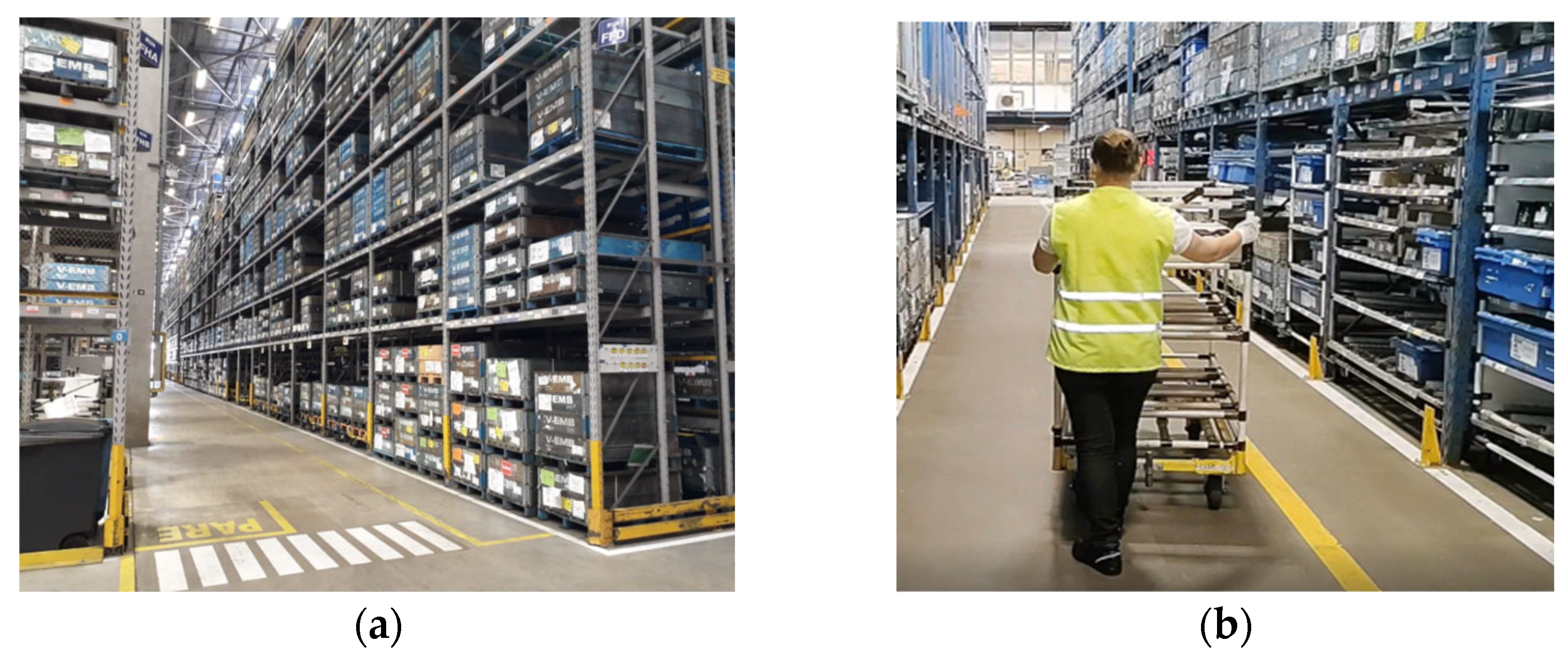

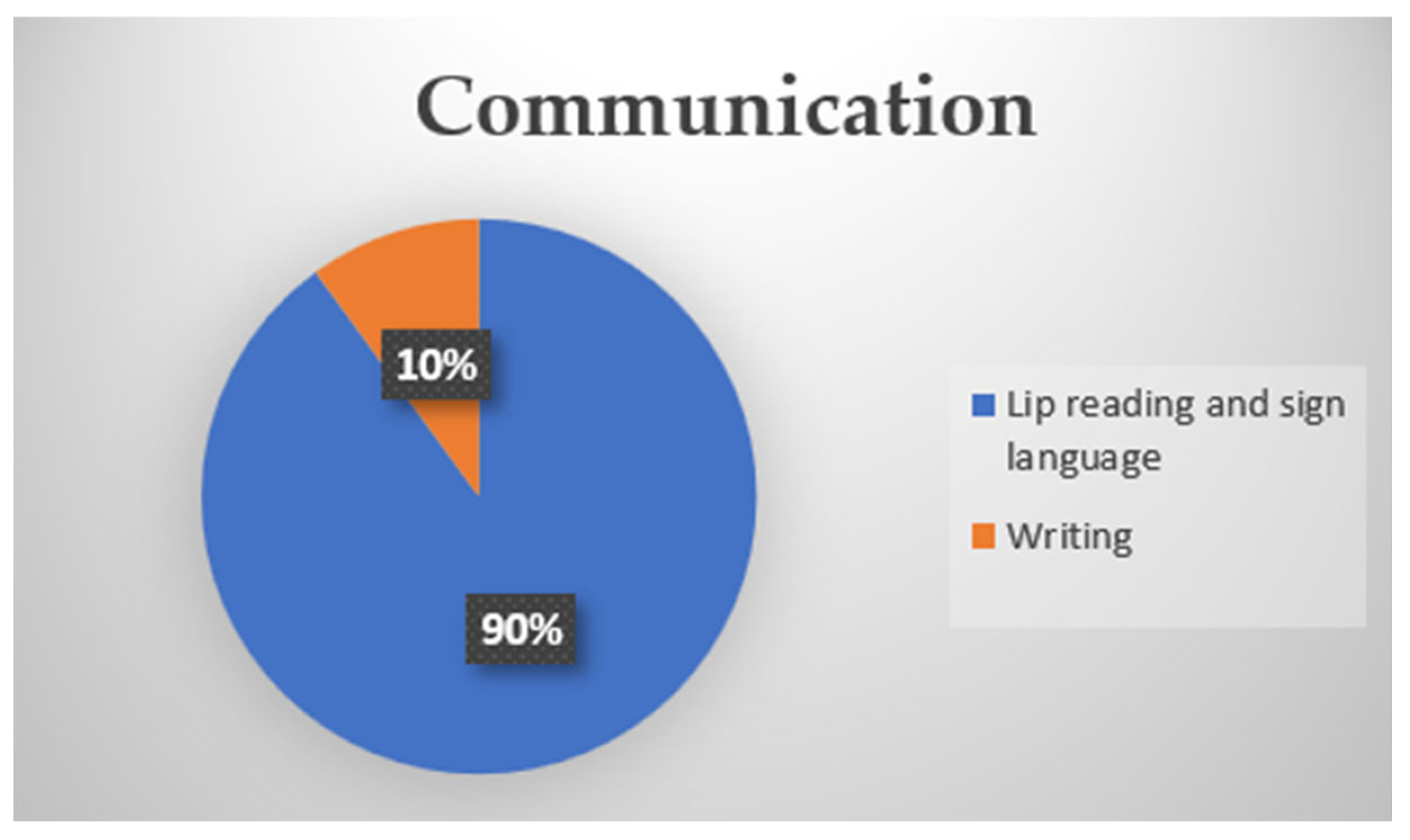
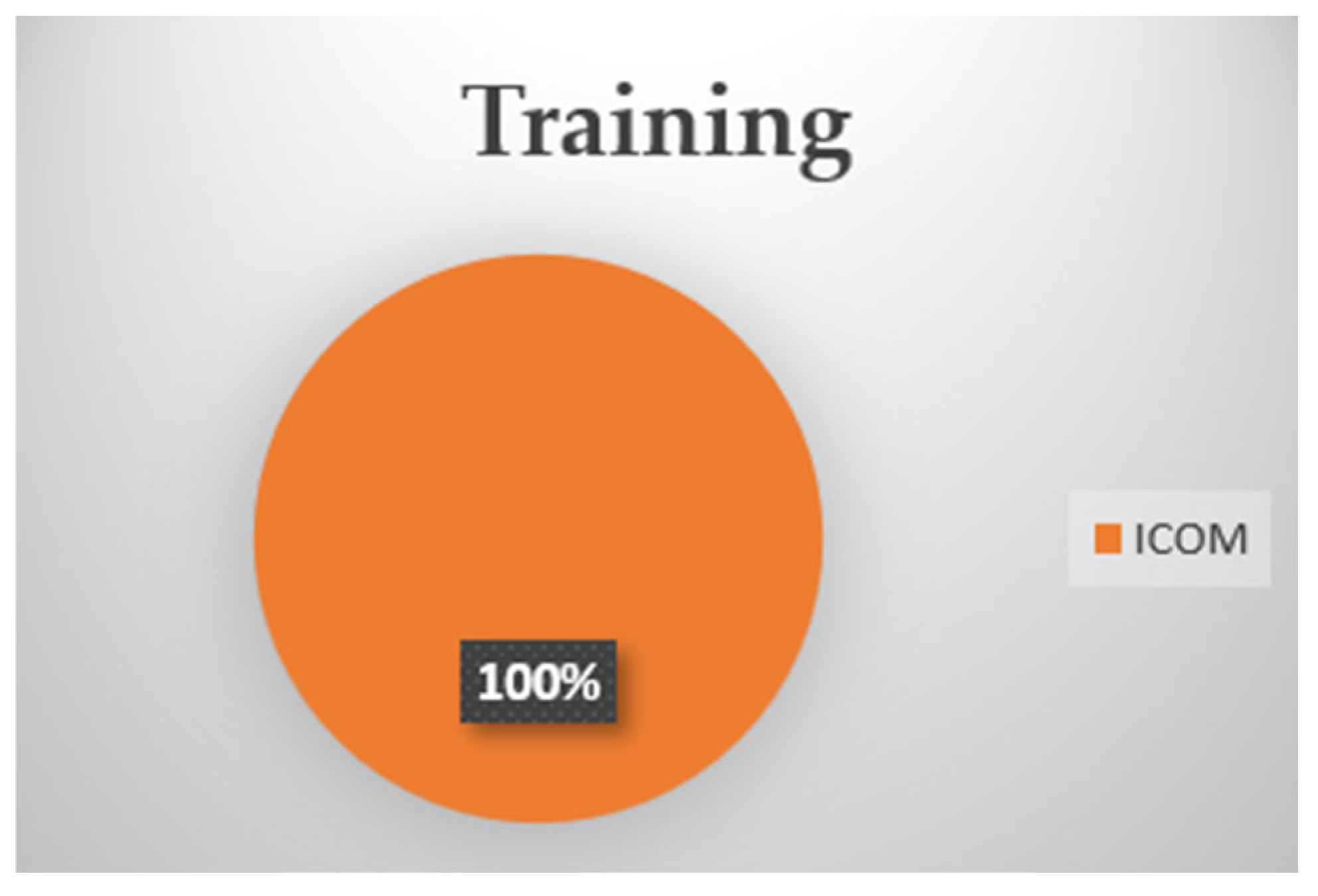
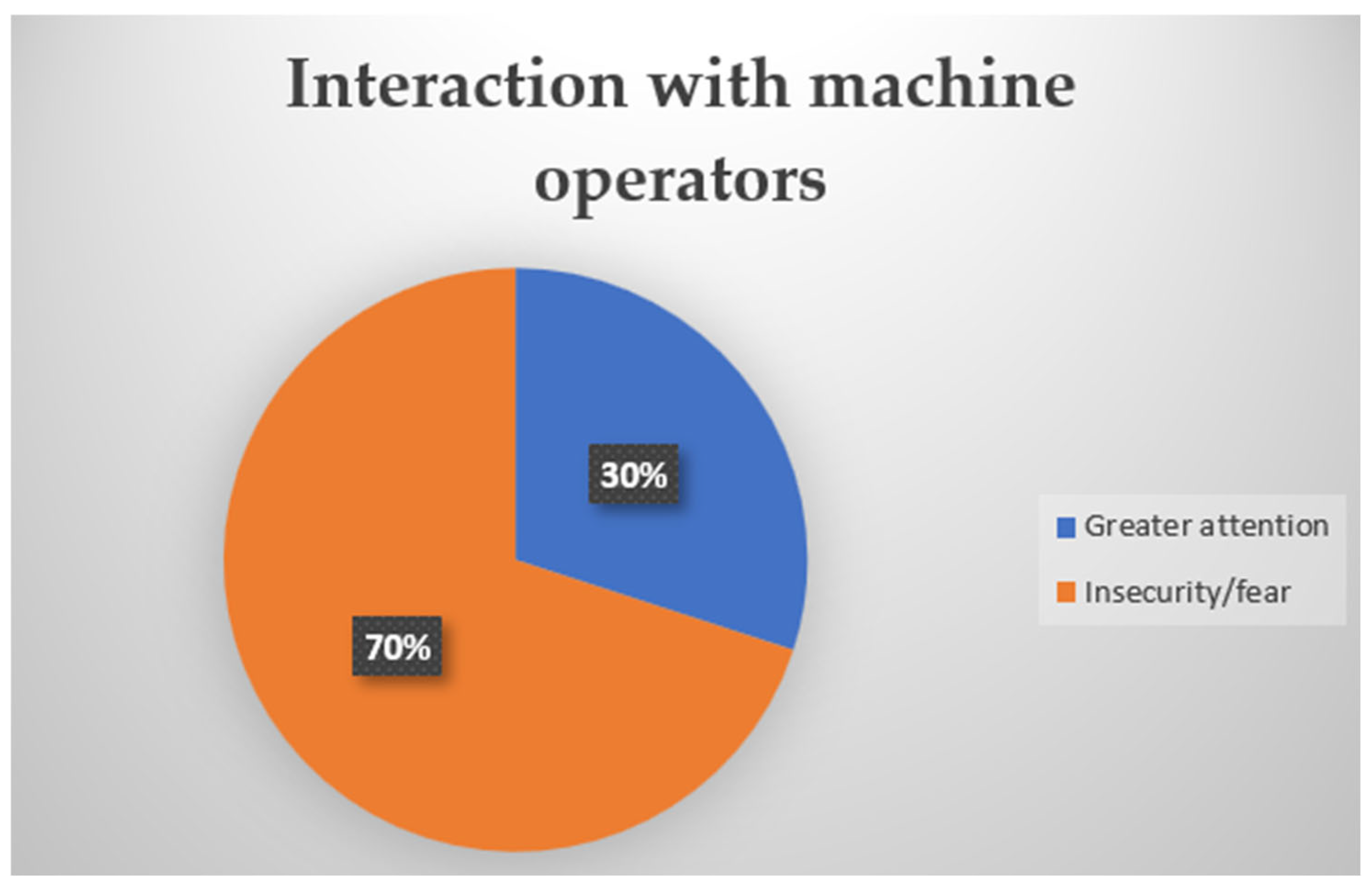
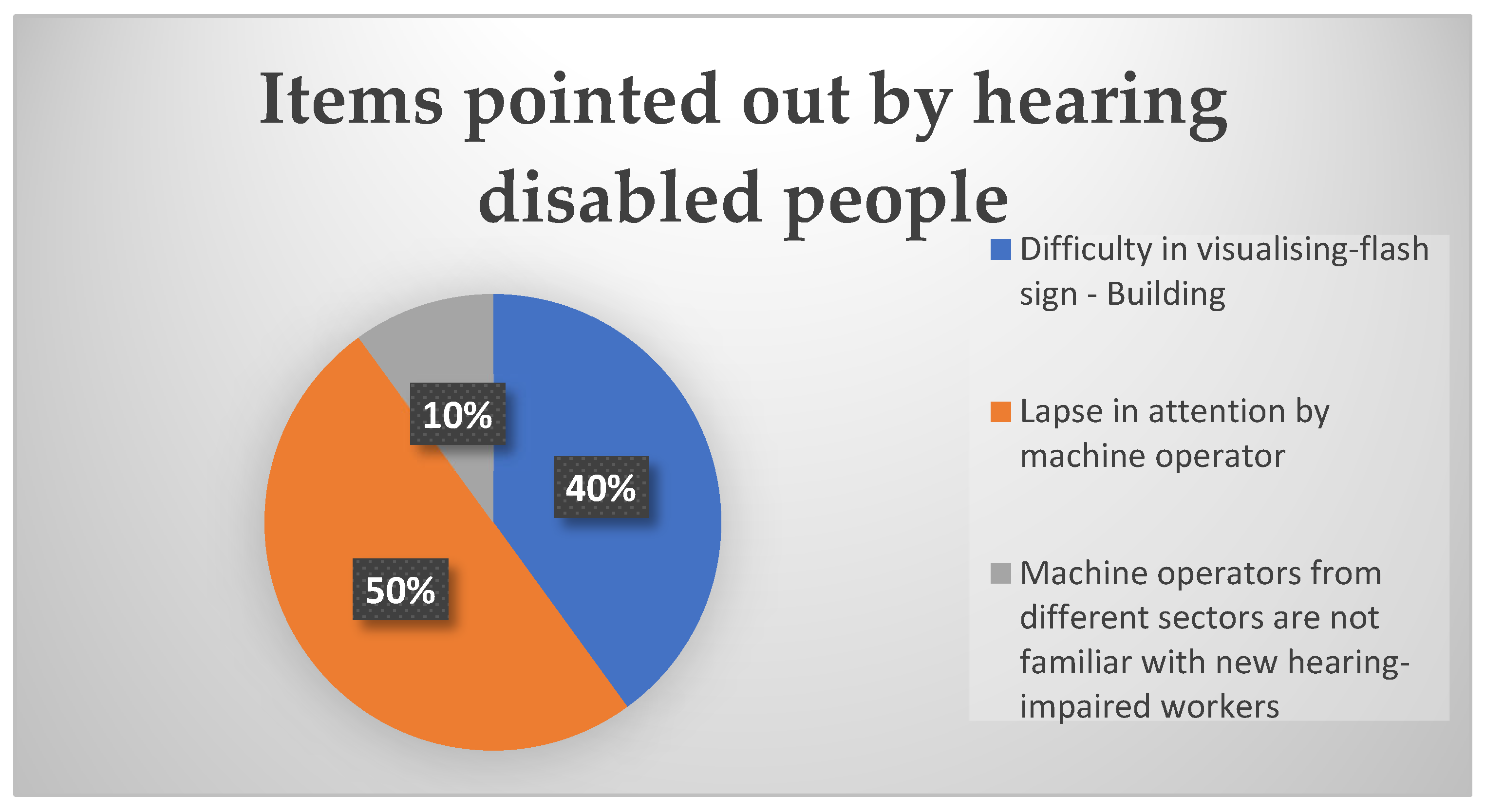
|
|
| ______________________________________________________________________________________________________________________________________________________ |
|
|
|
|
Disclaimer/Publisher’s Note: The statements, opinions and data contained in all publications are solely those of the individual author(s) and contributor(s) and not of MDPI and/or the editor(s). MDPI and/or the editor(s) disclaim responsibility for any injury to people or property resulting from any ideas, methods, instructions or products referred to in the content. |
© 2025 by the authors. Licensee MDPI, Basel, Switzerland. This article is an open access article distributed under the terms and conditions of the Creative Commons Attribution (CC BY) license (https://creativecommons.org/licenses/by/4.0/).
Share and Cite
Franchini, A.S.; de Paula Xavier, A.A.; Soares, A.L. Use of a Validated Risk Perception Questionnaire for the Inclusion of People with Hearing Impairments in a Productive Environment. Int. J. Environ. Res. Public Health 2025, 22, 884. https://doi.org/10.3390/ijerph22060884
Franchini AS, de Paula Xavier AA, Soares AL. Use of a Validated Risk Perception Questionnaire for the Inclusion of People with Hearing Impairments in a Productive Environment. International Journal of Environmental Research and Public Health. 2025; 22(6):884. https://doi.org/10.3390/ijerph22060884
Chicago/Turabian StyleFranchini, Aline Sias, Antonio Augusto de Paula Xavier, and André Luiz Soares. 2025. "Use of a Validated Risk Perception Questionnaire for the Inclusion of People with Hearing Impairments in a Productive Environment" International Journal of Environmental Research and Public Health 22, no. 6: 884. https://doi.org/10.3390/ijerph22060884
APA StyleFranchini, A. S., de Paula Xavier, A. A., & Soares, A. L. (2025). Use of a Validated Risk Perception Questionnaire for the Inclusion of People with Hearing Impairments in a Productive Environment. International Journal of Environmental Research and Public Health, 22(6), 884. https://doi.org/10.3390/ijerph22060884






